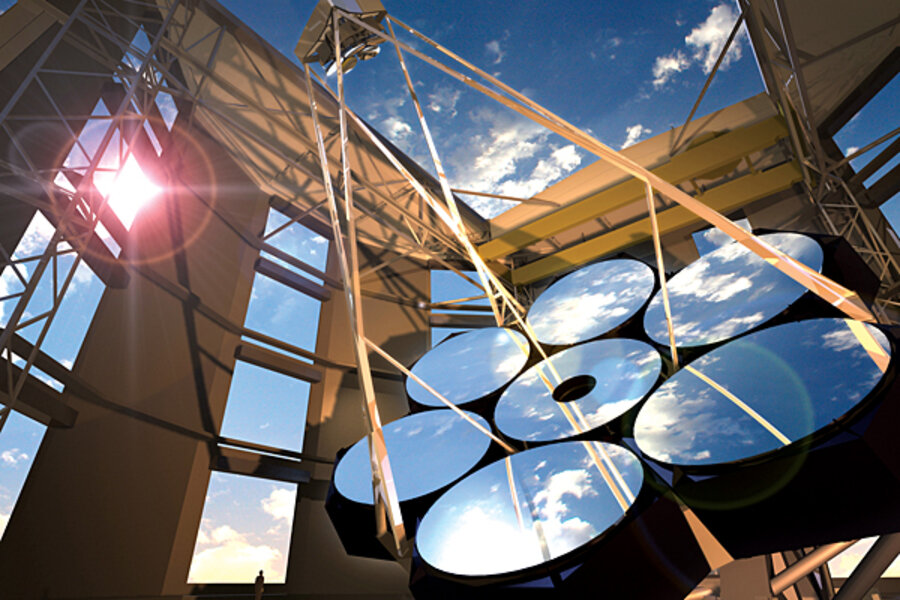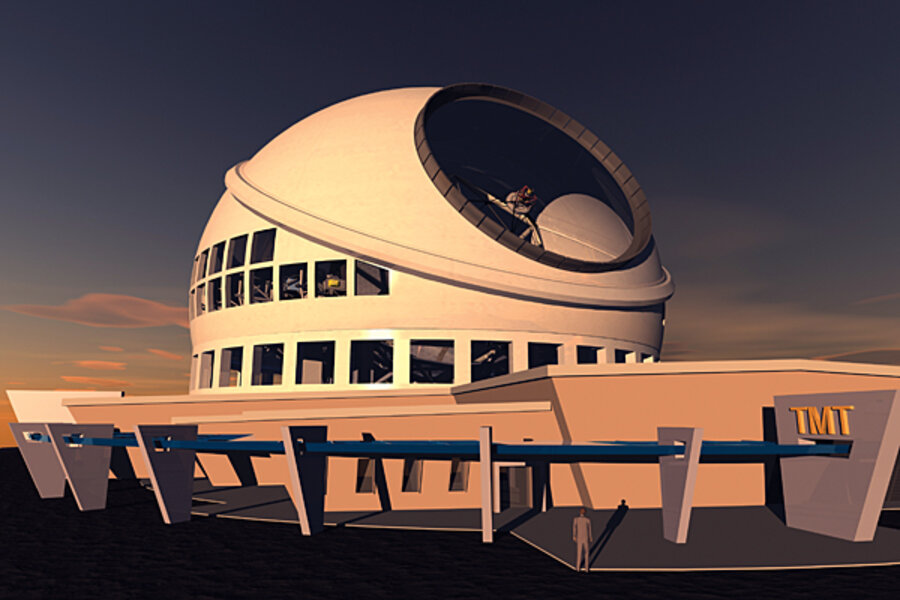New telescopes could revolutionize astronomy, but at what price?
Loading...
In a lab beneath the University of Arizona's football field, scientists are painstakingly polishing a glass disk nearly 28 feet across – the first of seven mirrors that, when combined to form an enormous optical telescope, would help revolutionize ground-based astronomy.
The telescope would reveal the universe's youngest stars and galaxies. It would analyze atmospheres surrounding planets orbiting other stars. In our own solar system, it would allow astronomers to explore frozen orbs far beyond the orbits of Neptune or Pluto in the so-called Kuiper Belt.
Nor is the Giant Magellan Telescope (GMT), supported by a US-led international group, alone. Another US-led, international consortium is moving forward this month on an even larger optical telescope, the Thirty Meter Telescope (TMT), atop Hawaii's Mauna Kea.
IN PICTURES: Images from the Hubble telescope
And both groups are looking over their shoulders at the Europeans, who in April approved a site for the European Southern Observatory's Extremely Large Telescope (ELT), whose 40-meter light-gathering mirror would make it the largest of the three projects.
Even in an era of space-based telescopes, the case for more glass on the ground is compelling, astronomers say. The light-gathering mirrors on space telescopes tend to be relatively small compared with their ground-based counterparts. So they can't perform the detailed studies of distant objects as efficiently as the larger, ground-based observatories.
But these new telescopes are expected to cost between $700 million and $1 billion just to build. Operating costs are likely to range from $70 million to $100 million a year, several researchers say.
With all of the projects bidding for government money, "there may be some hard choices ahead," says David Silva, director of the National Optical Astronomy Observatories in Tucson, Ariz.
In the United States, the choices revolve not only around which, if either, of the two projects to support.
A third, more modest US project, called the Large Synoptic Survey Telescope (LSST), also is vying for construction funds and has been on the astronomical community's priority list for the past decade. And astronomers are concerned that these big projects could siphon funds from other facilities used for important exploration that doesn't require telescopes whose light-gathering mirrors would fill nearly half a football field.
An international 'science machine'
"The science of astronomy and astrophysics encompasses a wide range of topics right now – everything from asteroids and small bodies in our solar system all the way out to the first stars forming in the early universe," Dr. Silva says. "Attacking all of those problems efficiently requires a complete suite of telescopes and instruments."
Indeed, there is a great deal of synergy between the 8-to-10-meter class of ground-based telescopes, such as the Keck Observatory on Mauna Kea, and space telescopes such as the Hubble Space Telescope, says Roberto Gilmozzi, the lead investigator for the European ELT project. "Together they are a much better science machine than either separately," he says.
Moreover, researchers argue that they need more than one of these new, larger, ground-based telescopes to ensure wider access to cutting-edge facilities.
Funding remains an issue on both sides of the Atlantic.
For Europe's ELT, Dr. Gilmozzi is cautiously optimistic that the European Southern Observatory's governing council will approve the project at a meeting toward the end of this year. But that approval, he says, hinges on the governments providing construction money upfront.
They are exploring ways to do that now, he continues, so "the next few months will be very tense."
Setting priorities
In the US, all sides are waiting for an influential document, which is due out in September and will set out the US astronomical communities' priorities for the next decade.
While partners in the GMT project, for example, have already raised significant funds, all three US projects are looking for federal support.
But "the National Science Foundation has sent signals making it clear that they believe they can only fund one major ground-based nighttime project in the con-struction phase in the next decade," says Silva.
IN PICTURES: Images from the Hubble telescope
Related:
New European space telescope opens a sharp eye on the sky
NASA and Obama's budget: the politics and ideals of human space exploration






